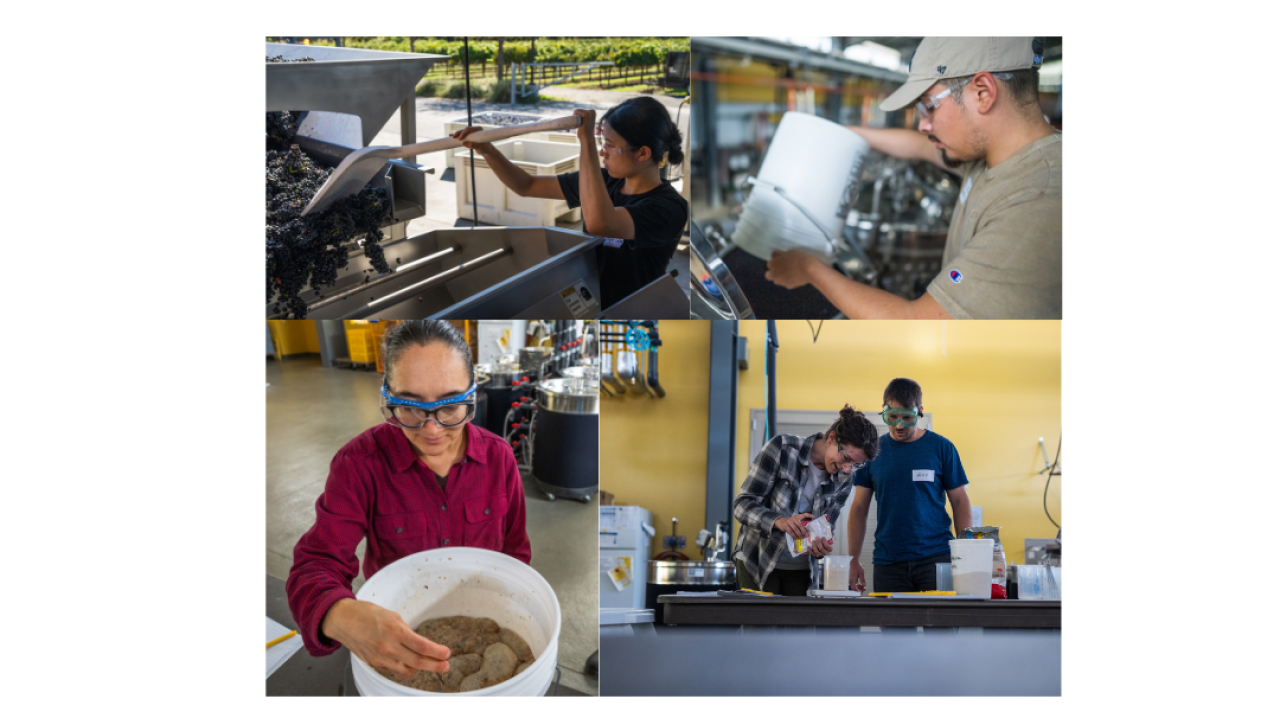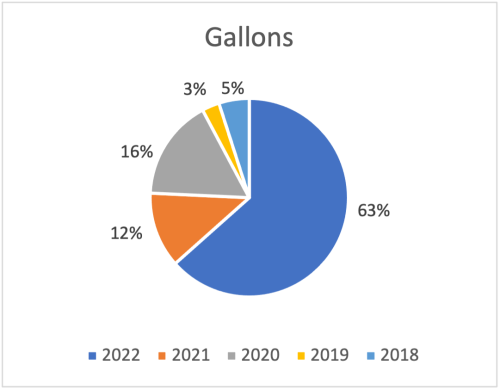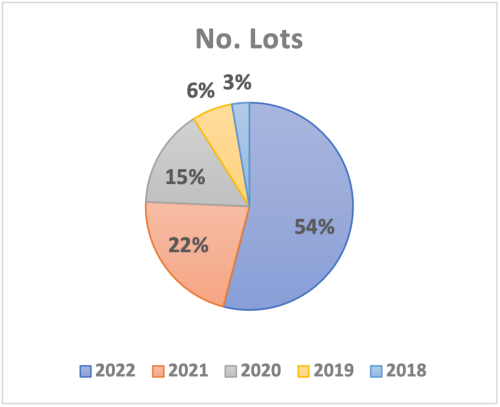
Every harvest comes with unique opportunities and challenges. This year we were happy that we were not affected by wildfires, and there was minimal impact from the pandemic. On the other hand, one of the main challenges was the heat wave, but we managed and were able to produce interesting wines.
An essential component to making harvest happen is the team: the wonderful students who learned and worked hard, the investigators and researchers who dedicated their efforts to successfully perform their experiments, friends from the industry, and the supportive and enthusiastic staff.
For the first time, we made Sauvignon Blanc with grapes from Oakville Station and the UC Davis RMI Vineyard (RMI), and Pinot Blanc (also from the RMI vineyard). In addition, we are very excited that World Varietals went to the next level producing Trousseau Port, and Xarel.lo. sparkling wine. We implemented for the first time a yeast culture for Sparkling wine for VEN124L and our Xarel.lo. We are aging Cabernet Sauvignon from Oakville Station in barrels donated by Oak Solutions, and we experimented with three different tannins. If you think that was not enough, we also made orange wine with Chardonnay grapes, which has nothing to do with actual oranges. It is a white wine fermented on skins and is currently aging in oak barrels.
We were privileged to collaborate with Dr. Anita Oberholster, Dr. Ron Runnebaum, Dr. Hildegarde Heymann, Dr. Andre Knoesen, Dr. David Block, and Dr. Roger Boulton. We are thankful for Dr. Bob Coleman from Treasury Wine Estates (TWE), who supported us with special equipment we need at the winery. We are also thankful to James Nelson, Ph.D. candidate, who supports our electrical engineers as well as the database to follow fermentation from any phone. He helped to incorporate Roger Boulton’s fermentation model and helped with the redox potential electrodes.
We harvested 50.75 tons of grapes this year, not including the micro and bucket fermentors. We have a total of 108 lots, and 9,232 gallons from various vintages, in inventory (as shown on the following graphs). The graph on the top refers to the volume in gallons from various harvest years, and the graph on the bottom, shows the number of different lots per vintage as a percentage of the total number of lots currently in inventory.


Thank you to everyone who contributed to the success of this Harvest!
Leticia
